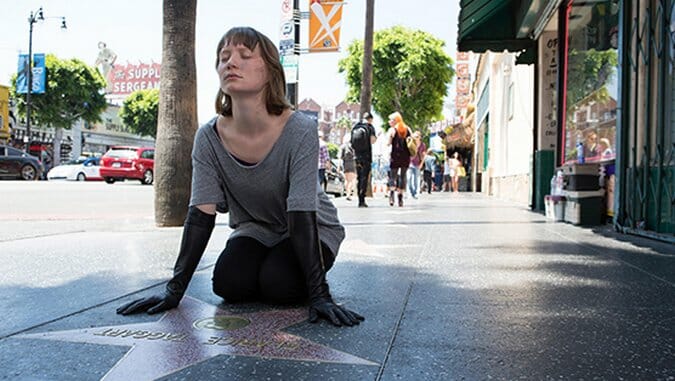Maps to the Stars

In the ’80s and ’90s, David Cronenberg built a formidable oeuvre around phenomenal body-horror, from the exploding heads of Scanners, to the full-corpus mutation of Jeff Goldblum in The Fly, to the “new flesh” synthesized in Videodrome and eXistenz—not to mention that he directed a commercial for Nike in 1990 called, appropriately enough, “Transformation.” Yet, post-Y2K, Cronenberg has focused more on the horrors under the skin, be it greed (Cosmopolis), or the toxic internalization of some of his favorite topics: sex (A Dangerous Method) and violence (A History of Violence). For Cronenberg’s first film partly shot in Hollywood, Maps to the Stars effortlessly combines that trinity of greed, sex and violence, yet the Hollywood he captures in the process feels less like a real indictment of Tinseltown excess and more an extremist, even obvious glimpse seen through a TMZ lens.
Maps to the Stars is Cronenberg and screenwriter Bruce Wagner’s idea of Hollywood as a stratified world of inhabitants existing in various levels of celebrity. Havana Sergrand (Julianne Moore) is an aging actress living in the shadow of her dead mother (Sarah Gadon)—who also occasionally haunts her daughter, literally. Benjie Weiss (Evan Bird) is the Bieberesque star of the Bad Babysitter franchise, fresh out of rehab and ready to offend everyone. Meanwhile, Benjie’s sister Agatha (Mia Wasikowska) is returning to the area for the first time in years, hoping to apologize for her past transgressions, which still resonate within her family, leaving her scarred both emotionally and physically.
Each of our three main stars attempt redemption in a land always looking for the next big thing—yet they are defined by their selfish wants more than their sincere grasps at being better people. Havana wants to play in a biopic about her own abusive mother, yet is passed over by someone younger, despite Havana’s attempts to seduce and sneak her way back to stardom. Benjie wants to leave the drugs behind and not lose the cultural power he adores, yet he’s constantly misguided—see only his first scene, wherein he visits a hospitalized fan with non-Hodgkin’s lymphoma, asking how she’s doing with her AIDS. Agatha just wants to return, which she does through a Twitter friendship with Carrie Fisher (playing herself). Agatha is tasked with helping the Hollywood veteran with her book—or what could turn into an HBO project. Agatha quickly becomes an assistant (really: chore whore) to Havana and starts a relationship with young actor/limo driver Jerome Fontana (Robert Pattinson).
-

-

-

-

-

-

-

-

-

-

-

-

-

-

-

-

-

-

-

-

-

-

-

-

-

-

-

-

-

-

-

-

-

-

-

-

-

-

-

-








































